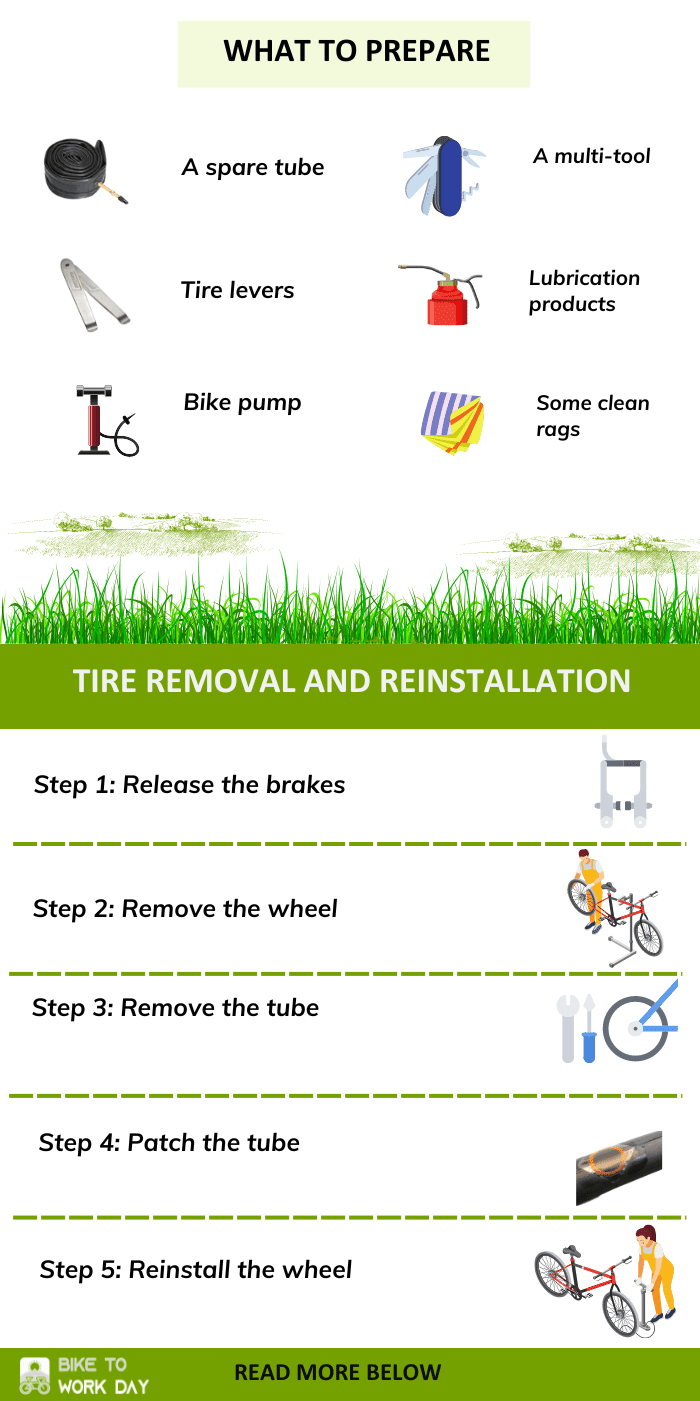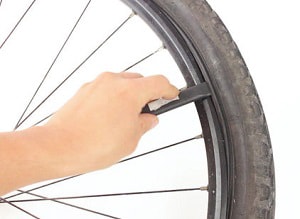Cycling is indeed a great pastime activity. However, such a good experience can become an inconvenience if you encounter a flat tire during your ride and have no clue about fixing the issues.
But worry not; you will be able to get back on track in no time if you know how to remove a bicycle tire. In this article, you will learn further about the proper steps to help you with the process.
Table of Contents
What to Prepare
There are essential tools that are a must to carry at all times to deal with unexpected incidents while biking. In fact, we should have the following pieces for removing bike tires:
- A spare tube
- Tire levers
- Bike pump
- A multi-tool.
- Lubrication products
- Some clean rags
Tire Removal and Reinstallation
Step 1: Release the brakes
There are two types of brakes: the V-brake and those with disc brakes.
- A V-brake consists of two brake arms where the other arm is holding the cable while the opposing arm is the one gripping the cable housing. Its mechanism is also called the cantilever pull method.
When the brake lever is pulled, the cable is also pulled along with the housing causing the brake pads to touch against the bike rim.
To release a V-brake, just squeeze the brake arms together to loosen the grip. You will be able to release the cable afterward.
- On the other hand, a disc brake functions similarly by squeezing the two brakes against the wheel rim by using pistons.
When you pull the lever, hydraulic is applied to the pistons causing the brake pads to squeeze.
To release it, bend the pin that attaches the pads together using the multi-tool or a bicycle tire removal tool. After pulling the pinout, just push the pads outside.
Step 2: Remove the wheel
After you have successfully released the brakes, it is pretty simple to remove a bicycle tire. The wheel is connected to dropouts fastened by an adjusting nut that holds down the quick-release lever.
The quick-release lever is straightforward to operate, but it requires strength to release its grip on a wheel, especially for a mountain bike tire. Loosening such levers does not require tools but just your bare hands.
- To finally remove the wheel, pull the lever downwards to open its release and loosen the adjusting nut if required. For other bikes, you can remove bike tire without lever because you only have to pull the nut out.
- Lastly, fully remove the axle outwards to detach the wheel from the dropout. For rear wheels, simply pull down the derailer then you can release the cog from its chains.
Step 3: Remove the tube
- To take tire off bike, completely deflate the tire first, and make sure there is no air, even just a small amount, to achieve the best results.
- First, place a tire lever on any rim part except at the valve. Pull back and then gently lift the lever to push the bead out of the rim.
- Place the other tire lever about a few inches away from the first one and lift out the bead. After that, repeat the same steps for the remaining areas on the rim to carefully take off a bike tire.
Step 4: Patch the tube
After removing the bike tube, you may either patch the hole on the tube or go for a bike tire replacement. Patching a tire is way cheaper and less time-consuming, but replacing the tire is recommended if the damage or flat is beyond repair.
Before patching, use the clean rags to clean the area, and you can use the lubrication supplies or even just plain water.
Spread the glue evenly, then firmly hold down the patch in place. Leave it overnight before continuing to fix a bike tire.
Step 5: Reinstall the wheel
- Make sure that the tire is partially inflated by at least 30% before reattaching it to its tube. Place the valve stem back into the rim properly to prevent the valve from misaligning.
- Slowly put the tube first, then the tire back to the rim. Start from the valve when reconnecting the tire back to its wheel and inflate the replaced or patched to its recommended pressure.
Conclusion
Removing and reinstalling a bike tire can be taxing but with the right tools and proper understanding of the process, it is actually just a straightforward task to do.
You have now learned how to remove a bicycle tire and you will always be prepared for what to do in case your bike gets flat again. At this point, your bike is ready to carry on with your thrilling ride experience on the roads.

“I ride my bike to work for years, but is that enough? Our carelessness towards our surroundings has taken a toll on the environment. And now, everyone is responsible for changes; even the most minor contribution is counted. With this hope and spirit, I started with my partner to establish Biketoworkday to help more individuals commute to their work sites on their bikes.”





